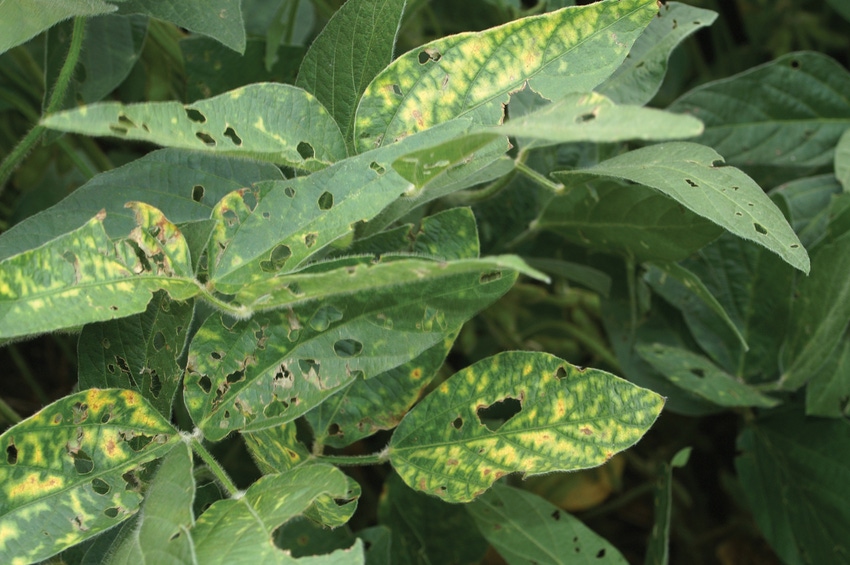October 27, 2011

Hot, dry weather last summer spared many soybean fields from an outbreak of sudden death syndrome (SDS), but there’s no guarantee 2012 will be similarly blessed.
“If you had SDS in a field in 2010, then for the rest of that field’s life, you have to manage for SDS,” warns Alison Robertson, a plant pathology professor at Iowa State University.
“Managing for SDS takes an integrated approach,” she continues. “It’s not enough just to plant a resistant variety.”
SDS has become one of the most important soybean diseases, spreading throughout the Midwest and beyond to states like Mississippi and Tennessee. In Indiana, for example, the fungus is now present in nearly all soybean fields. In 2010, an especially bad year for SDS, outbreaks were reported in 96 of Iowa’s 99 counties.
Robertson outlines a series of steps that, taken together, reduce the risk of serious SDS losses:
■ The first and most important step is to plant SDS-resistant varieties.
■ Monitor for soybean cyst nematode (SCN) populations. “We know there’s an interaction between SDS and SCN,” Robertson says. “In fields that have SCN, we see SDS occurring earlier in the growth process and being more severe.”
■ Improve drainage and reduce compaction. “Anything you can do to improve drainage and reduce compaction will also reduce your risk,” she says. “You may want to consider tiling in some fields.”
It may help to bury crop residue in badly affected fields, according to John Holmes, an Iowa State Extension field agronomist, since the disease can survive even on corn residue. Anything that moves residue can also contribute to the spread of SDS, he notes.
To the extent weather permits, plant in warmer, dryer conditions. “Fields planted in cooler, wetter conditions have a higher risk of infection. Don’t delay so late into May that you impact yield potential, but try to plant when fields are dryer,” Robertson advises.
The disease infects crops shortly after planting, when the fungus colonizes roots and the lower stem, Holmes explains. It doesn’t normally manifest symptoms until pod fill, when the fungus produces a toxin that creates visual symptoms.
“Once you can see symptoms, there’s not much you can do,” Holmes says.
How effective management measures can be is uncertain, according to Robertson.
“For example, resistant varieties still get SDS, but the severity is less, and the impact on yields is less. We don’t really know how much you can mitigate the risk,” she says.
The effort is worth making, though, since a severe outbreak of SDS can cut yields by as much as 70%.
Holmes puts losses in other terms: “For guys with SDS, as they harvested, they could see the yield monitor numbers just drop.”
SDS research is attacking the disease on multiple fronts — from basic research regarding how the toxin is formed, what genes are involved, and how to turn them off, to applied research into specific management options.
Robertson notes, however, that while there are seed treatments for SDS in the research pipeline, none of the treatments currently commercially available have proved effective against SDS.
“Everybody has their theories, but at the end of the day, it all comes down to weather,” Robertson concludes.
You May Also Like




